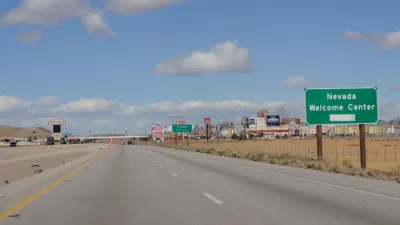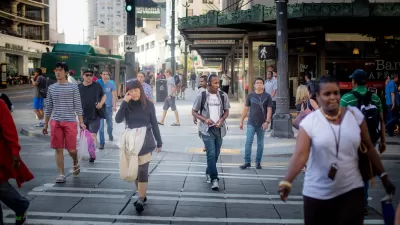"Who's Moving to the Cities, Who Isn't" suggest that the number of Americans selling the "Golden Age" cities narrative is greater than the number of Americans buying into it.

John Gallagher shares news of a new report by Alan Mallach for the Center for Community progress titled "Who's Moving to the Cities, Who Isn't" which "used Census data to ask whether the rate at which college-educated millennials and empty-nesters were moving back into cities exceeded the rate at which they were increasing statewide."
The report's findings undermine "the notion of a new 'Golden Age' for cities" in which Americans of all generations are abandoning the suburbs to move to the urban core.
Several of the magnet cities are indeed drawing above-average numbers of educated millennials, and some of the legacy cities — Baltimore, Philadelphia, Pittsburgh and St. Louis — also have become significant millennial destinations. But other cities do no better than their statewide average, and Detroit and Newark actually are losing ground in their population of educated young people compared to statewide trends.
Similar trends hold true for older generations, writes Gallagher: "even fewer cities are attracting educated older boomers in the 45-and-over age group."
FULL STORY: Who’s Moving to the Cities, Who Isn’t: Comparing American Cities

Planetizen Federal Action Tracker
A weekly monitor of how Trump’s orders and actions are impacting planners and planning in America.

Chicago’s Ghost Rails
Just beneath the surface of the modern city lie the remnants of its expansive early 20th-century streetcar system.

San Antonio and Austin are Fusing Into one Massive Megaregion
The region spanning the two central Texas cities is growing fast, posing challenges for local infrastructure and water supplies.

Since Zion's Shuttles Went Electric “The Smog is Gone”
Visitors to Zion National Park can enjoy the canyon via the nation’s first fully electric park shuttle system.

Trump Distributing DOT Safety Funds at 1/10 Rate of Biden
Funds for Safe Streets and other transportation safety and equity programs are being held up by administrative reviews and conflicts with the Trump administration’s priorities.

German Cities Subsidize Taxis for Women Amid Wave of Violence
Free or low-cost taxi rides can help women navigate cities more safely, but critics say the programs don't address the root causes of violence against women.
Urban Design for Planners 1: Software Tools
This six-course series explores essential urban design concepts using open source software and equips planners with the tools they need to participate fully in the urban design process.
Planning for Universal Design
Learn the tools for implementing Universal Design in planning regulations.
planning NEXT
Appalachian Highlands Housing Partners
Mpact (founded as Rail~Volution)
City of Camden Redevelopment Agency
City of Astoria
City of Portland
City of Laramie





























